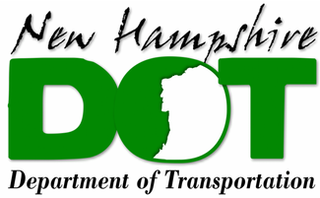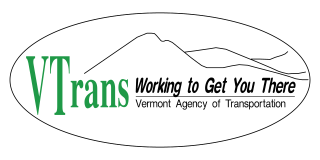
The governor of North Carolina is the head of government of the U.S. state of North Carolina. Seventy-five people have held the office since its inception in 1776. The governor serves a term of four years and chairs the collective body of the state's elected executive officials, the Council of State. The governor's powers and responsibilities are prescribed by the state constitution and by law. They serve as the North Carolina's chief executive and are tasked by the constitution with faithfully carrying out the laws of the state. They are ex officio commander in chief of the North Carolina National Guard and director of the state budget. The office has extensive powers of appointment of executive branch officials, some judges, and members of boards and commissions. Governors are also empowered to grant pardons and veto legislation.
The United States federal executive departments are the principal units of the executive branch of the federal government of the United States. They are analogous to ministries common in parliamentary or semi-presidential systems but they are led by a head of government who is also the head of state. The executive departments are the administrative arms of the president of the United States. There are currently 15 executive departments.
Councils of governments are regional governing and/or coordinating bodies that exist throughout the United States. CoGs are normally controlled by their member local governments, though some states have passed laws granting CoGs region-wide powers over specific functions, and still other states mandate such councils.

Most U.S. states and territories have at least two tiers of local government: counties and municipalities. Louisiana uses the term parish and Alaska uses the term borough for what the U.S. Census Bureau terms county equivalents in those states. Civil townships or towns are used as subdivisions of a county in 20 states, mostly in the Northeast and Midwest.
An unfunded mandate is a statute or regulation that requires any entity to perform certain actions, with no money provided for fulfilling the requirements. This can be imposed on state or local government, as well as private individuals or organizations. The key distinction is that the statute or regulation is not accompanied by funding to fulfill the requirement

The Appalachian Regional Commission (ARC) is a United States federal–state partnership that works with the people of Appalachia to create opportunities for self-sustaining economic development and improved quality of life. Congress established ARC to bring the region into socioeconomic parity with the rest of the nation.
The Metropolitan Transportation Commission (MTC) is the government agency responsible for regional transportation planning and financing in the San Francisco Bay Area. It was created in 1970 by the State of California, with support from the Bay Area Council, to coordinate transportation services in the Bay Area's nine counties: Alameda, Contra Costa, Marin, Napa, San Francisco, San Mateo, Santa Clara, Solano, and Sonoma. The MTC is fourth most populous metropolitan planning organization in the United States.

The New Hampshire Department of Transportation (NHDOT) is a government agency of the U.S. state of New Hampshire. The Commissioner of NHDOT is Victoria Sheehan. The main office of the NHDOT is located in the J. O. Morton Building in Concord.

The Vermont Agency of Transportation (VTrans) is a government agency of the U.S. state of Vermont that is responsible for planning, constructing, and maintaining a variety of transportation infrastructure in the state. This includes roads, bridges, state-owned railroads, airports, park and ride facilities, bicycle facilities, pedestrian paths, public transportation facilities and services, and Department of Motor Vehicles operations and motor carrier enforcement.
The Massachusetts Department of Transportation (MassDOT) oversees roads, public transit, aeronautics, and transportation licensing and registration in the US state of Massachusetts. It was created on November 1, 2009, by the 186th Session of the Massachusetts General Court upon enactment of the 2009 Transportation Reform Act.
The Puget Sound Regional Council (PSRC) is a metropolitan planning organization that develops policies and makes decisions about transportation planning, economic development, and growth management throughout the four-county Seattle metropolitan area surrounding Puget Sound. It is a forum for cities, towns, counties, transit agencies, port districts, Native American tribes, and state agencies to address regional issues.
An earmark is a provision inserted into a discretionary spending appropriations bill that directs funds to a specific recipient while circumventing the merit-based or competitive funds allocation process. Earmarks feature in United States Congress spending policy, and they are present in public finance of many other countries as a form of political particularism.

Preserve America is a United States government program, established under President George W. Bush, intended to encourage and support community efforts to preserve and enjoy the country's cultural and natural heritage.

The American Recovery and Reinvestment Act of 2009 (ARRA), nicknamed the Recovery Act, was a stimulus package enacted by the 111th U.S. Congress and signed into law by President Barack Obama in February 2009. Developed in response to the Great Recession, the primary objective of this federal statute was to save existing jobs and create new ones as soon as possible. Other objectives were to provide temporary relief programs for those most affected by the recession and invest in infrastructure, education, health, and renewable energy.

Rebuilding American Infrastructure with Sustainability and Equity (RAISE) is an American federal government program administered by the United States Department of Transportation. Originally known as Transportation Investment Generating Economic Recovery (TIGER), it began as supplementary discretionary grant program included in the American Recovery and Reinvestment Act of 2009. Initial legislation provided $1.5 billion for a National Surface Transportation System through September 30, 2011, "to be awarded on a competitive basis for capital investments in surface transportation projects". The program has been extended several times, and was renamed as Better Utilizing Investments to Leverage Development (BUILD) in 2018 before taking its current name in 2021.

Due to the common occurrence of hurricanes in the coastal state of North Carolina, hurricane recovery in North Carolina is a large component of the state's emergency management efforts. Recovery from these tremendous storms at the local and state level is a large part of the aftermath of a hurricane. Gavin Smith and Victor Flatt stated that "Disaster recovery remains the least understood aspect of hazards management, when assessed relative to preparedness, response, and hazard mitigation." Smith and Flatt also went on to state that the role of the states is even less understood. The review of the plans and policies that instruct recovery, agencies involved, funding processes and budgets, and the environmental effects of a hurricane creates a better understanding of how North Carolina recovers from a hurricane.

The Barnum station is a planned regional rail station to be located on the Metro-North Railroad's New Haven Line in East Bridgeport, Connecticut. The station will be named after the circus showman and former Bridgeport mayor P. T. Barnum, and will be located on the south side of Barnum Avenue between Seaview Avenue and Pembroke Street. A feasibility study was released in July 2013, followed by preliminary planning funding in July 2014 and an application for planning funding in June 2015. By January 2017, the station was planned to open in 2021. However, the project was indefinitely postponed in January 2019.

Councils of governments in Connecticut are organizations that bring together the chief elected officials and/or professional managers from member municipalities in Connecticut. The bodies are meant to aid coordination among neighboring cities and towns, and between the towns and the state government, on issues including land use, zoning, and transportation. They serve some functions analogous to county governments in other states, but have no independent taxing authority. Councils of government also host some intermunicipal services based on the needs and voluntary participation of member or client municipalities. Councils, or COGs, receive funding through membership dues, state grants, and federal grants.
Durham–Orange Light Rail Transit (DOLRT) was a planned 17.7-mile (28.5 km) light rail line in central North Carolina. It was intended to start operating in 2028 between North Carolina Central University (NCCU) in eastern Durham and the UNC Medical Center in Orange County. This line was being developed by regional transit agency GoTriangle, and was in the engineering phase of the federal grant approval process when it was discontinued.

Rajan Sawhney is a Canadian politician from the United Conservative Party in Alberta. She was elected in the 2019 Alberta general election to represent the electoral district of Calgary-North East in the 30th Alberta Legislature. On April 30, 2019, she was appointed to be the Minister of Community & Social Services in the Executive Council of Alberta. On July 8, 2021, she was shuffled into the Minister of Transportation.












